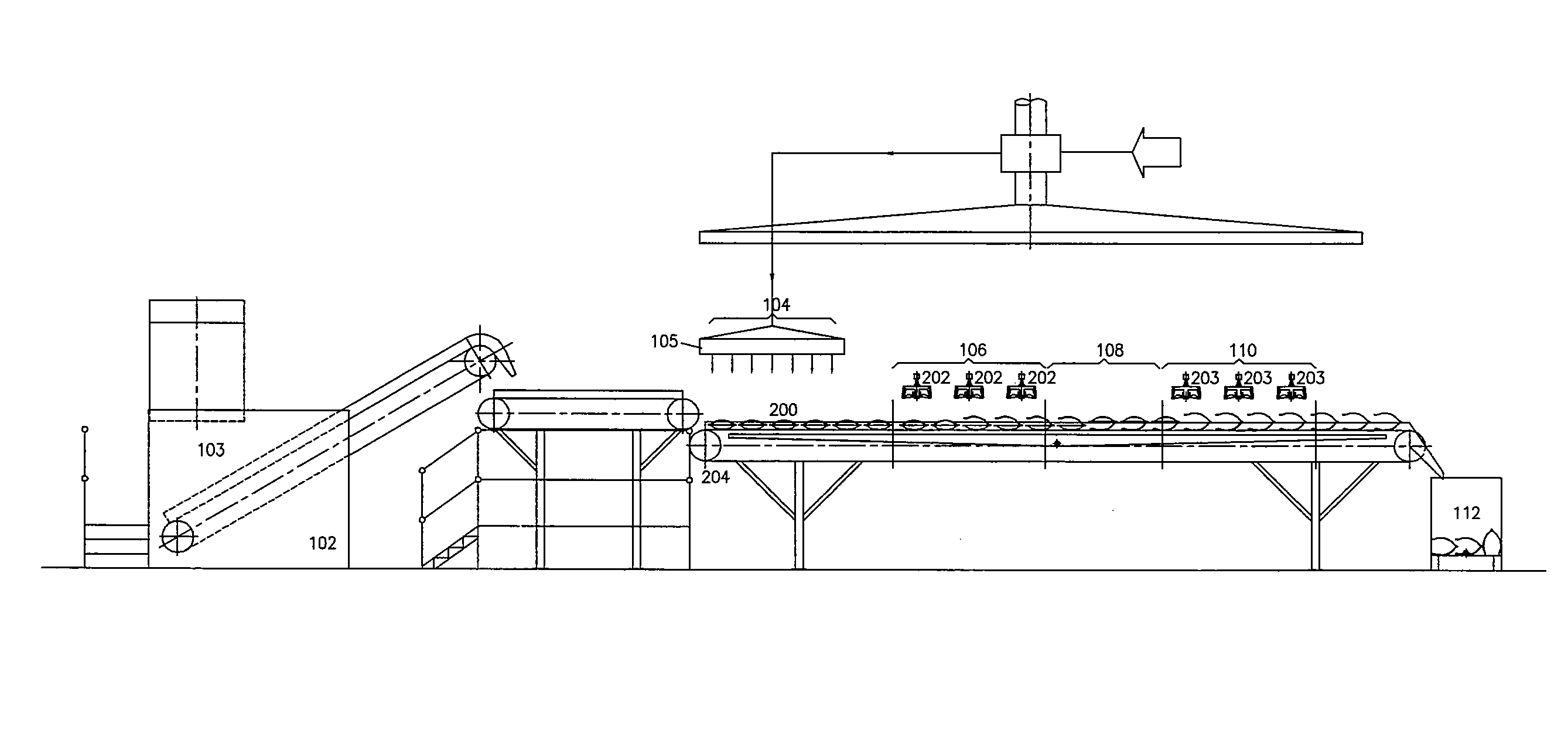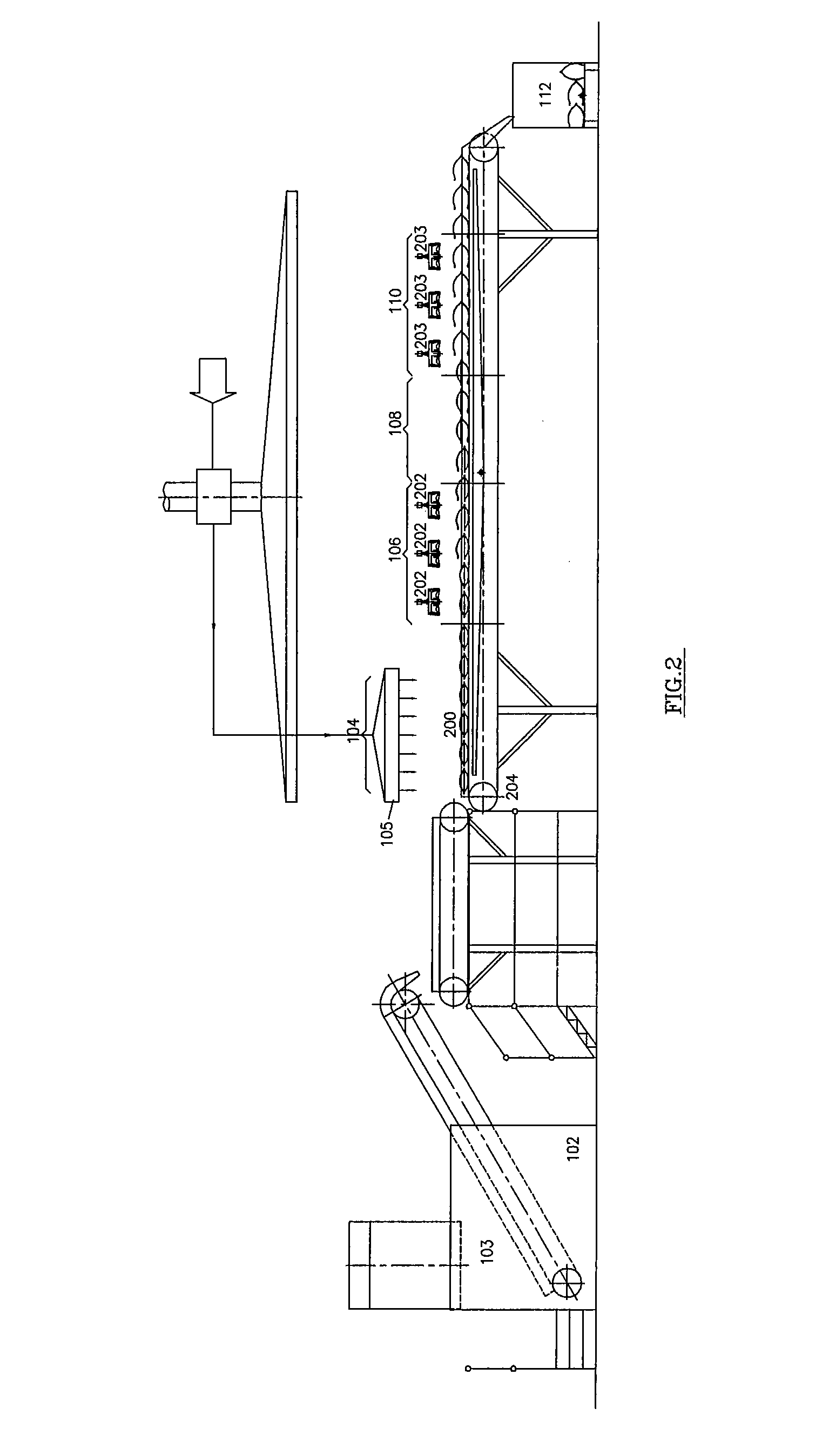Method and system for opening shellfish using infrared energy
a technology of infrared energy and shellfish, applied in the field of shellfish, can solve problems such as insufficient cooking
- Summary
- Abstract
- Description
- Claims
- Application Information
AI Technical Summary
Benefits of technology
Problems solved by technology
Method used
Image
Examples
example 1
[0038]Clams were processed in the following trials. Three infrared burners were operated in zone 1 (first stage opening 106) and three infrared burners were operated in zone 2 (second stage opening 110). Gas fired infrared burners by Red-Ray Manufacturing, Inc., of Branchburg, N.J. were used (model type KN-SS-SC). Each zone was approximately 26 inches long with burners on 10 inches centers, approximately, and each burner was approximately 4 inches wide. All burners were positioned 6 inches above the conveyor. Radiation was centered around a wavelength of 2.7 microns and operated at a temperature range of about 1800° F. to about 2200° F. The exact temperature was not measurable by a pyrometer because the exact temperature varies within the above cited range. The conveyor was traveling at speeds ranging between 2.84 to 3.43 fpm (feet per minute). Following processing, the surface of the meat was measured with an optical pyrometer (“MID TEMP” in degrees Fahrenheit) and the center of th...
example 2
[0046]Mano and surf clams were processed in the following trials. Surf clams are typically about 4 to 5 inches long, 2 to 3 inches wide, and 1.5 to 2 inches deep. Mano clams are typically about 2.5 to 3 inches long, about 2 inches wide, and about 1 inch deep. Three belt speeds were tested corresponding to three different residence times under the burners. The residence times ranged from about 30 to 35 seconds under each of the two zones (first and second sides) for about 60 to 70 seconds total time under the burners. Each zone was approximately 26 inches long with burners on 10 inch centers. Each burner is about 4 inches wide. There are three burners in each zone. The burner height was about 4 to 5.5 inches above the conveyor. Radiation from the infrared burners was centered around a wavelength of 2.7 microns and operated at a temperature range of about 1800° F. to about 2200° F.
[0047]The mano clams may be temper washed according one of the following: (1) 20 seconds in a bath at 170...
PUM
 Login to View More
Login to View More Abstract
Description
Claims
Application Information
 Login to View More
Login to View More - R&D
- Intellectual Property
- Life Sciences
- Materials
- Tech Scout
- Unparalleled Data Quality
- Higher Quality Content
- 60% Fewer Hallucinations
Browse by: Latest US Patents, China's latest patents, Technical Efficacy Thesaurus, Application Domain, Technology Topic, Popular Technical Reports.
© 2025 PatSnap. All rights reserved.Legal|Privacy policy|Modern Slavery Act Transparency Statement|Sitemap|About US| Contact US: help@patsnap.com



